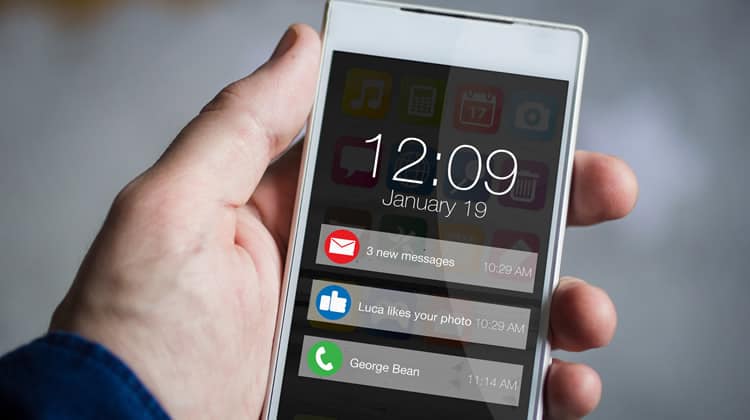Even though push notifications have been around for a while, many brands and companies worldwide do not use them correctly, if at all. These are the most significant benefits and some tips on how to make engaging push notifications.
We all know and have probably been irritated by apps on our phones using push notifications to try and get us to re-engage. Because of this, many companies and brands have been put off from using them, assuming that they only create negative sentiment with a user base.
However, this could not be further from the truth as it is just about how, when and why the push notification is being used and the actual content of the notification that will make or break its effectiveness.
This can be seen by the types of businesses and apps that are using them well. For example, Netflix creates highly personalized push messages based on a user’s viewing history, so they will only be notified about new shows that they will be interested in.
On the other hand, in the retail sector, Amazon managed to increase sales by up to 30% by using effective notifications. It is a practice that is commonly used in the iGaming industry too, as many of the most popular cricket betting apps like bet365 also have push notification services that allow players to keep up to date with the latest offers, promotions and sports action.

Making The Best Push Notifications
To create an excellent push notification, you need to keep four crucial things in mind. Firstly, you need to know your audience as well as possible. This leads to the second point: making personalised messages, so people are only being notified of things that interest them. Nothing will push users away faster than random pointless messaging.
Thirdly, you need to be aware that the messaging will be received on many different devices, from different makes and models of mobile phones to laptops, personal computers and tablets. Now take that information and plug it into your analytics. Do your Android or iOS users open push notifications more often? Do people make purchases from their phones or PCs? This is all invaluable information that will help your business grow and be more effective.
Now that the importance of push notifications has been established and some tips on how to create great ones, these are the top benefits of effective messaging.
Re-Engaging Users
Statistics show that many potential users are lost to apps every year because they download the app and install it but never open it again. A good push notification can remind users the app is on the phone and why they downloaded it in the first place. A study by Urban Airship showed that even one good push notification could increase user retention by up to 10 times, and it is a well-established fact that users who opt into notifications are easier to retain.
Increased Sales Conversion
Abandoned shopping carts are a big problem for online companies. People tend to shop around a lot online, so items they find early on can often be left by the wayside as the shopping journey continues. According to Statista, the rate of abandoned carts online was above 69%. A timely push notification can remind users of their left-behind goods and possibly even offer them a discount or special deal to create a sense of urgency around making the purchase.
Personalised Messaging
During the installation process, many apps will ask for various permissions from the user, such as access to their location data. If granted, you will be provided with a swathe of data that can be used to your advantage. With this data, you can start sending push notifications to users in specific regions or countries or based on a particular time zone. You can send push notifications based on interests, such as the Netflix example above. This type of messaging tends to resonate far better with people because it feels like it is being sent to them rather than just being part of a mass marketing campaign.
Understand Your User Base
Push notifications themselves create a wide range of data about the people they are sent to, such as how quickly people open them after they have been sent, how many people open them, how long people spend engaged with them if they clicked through on any links, and more. This creates an environment where you can use data from your older notifications to make more effective ones in the future and use the data to influence your other forms of marketing and customer relations.

